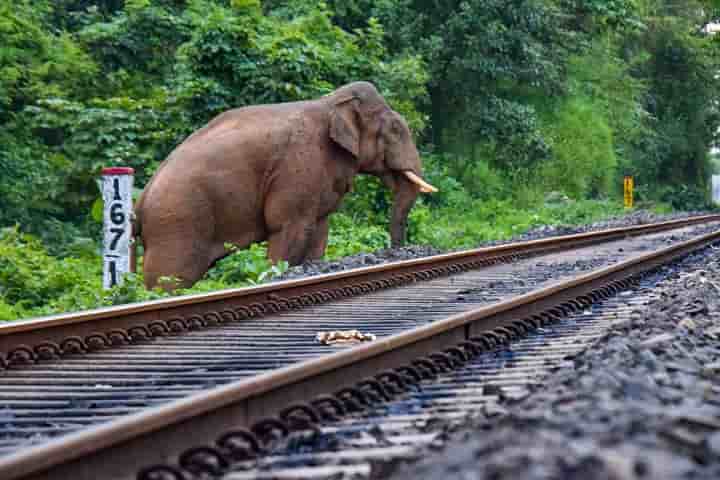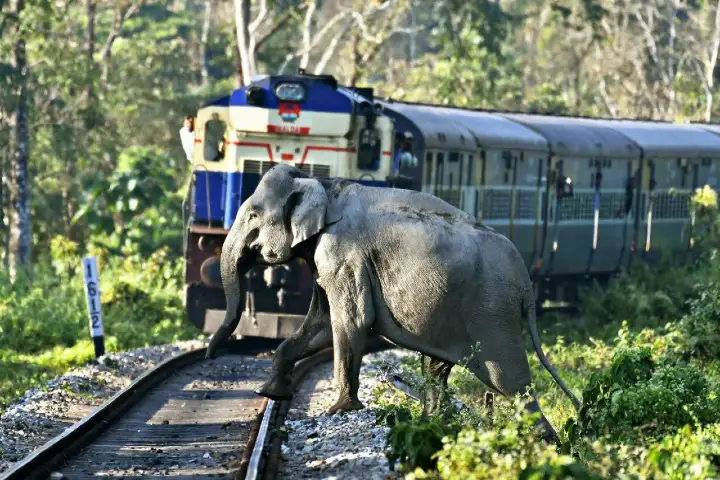The Indian Railways have always been a pioneer in using technology not just for passengers and transporting freight but also to help wild animals. This became evident as the Northeast Frontier Railway bagged the prestigious Project Management Institute South Asia award for Project of the Year in the Micro Project category.
NFR’s entry to the PMI award was Intrusion Detection System which has been devised and used to save elephants. The IDS uses Artificial Intelligence to detect the presence of elephants. It is a computerised system that helps in prevention of these animals colliding with trains. When the jumbos are close to the track, the mechanism automatically sends an alert to the loco pilot enabling him or her to stop the train. The system was introduced in 2022 and has resulted in preventing death of elephants due to train collisions.
Interestingly, this is the first time that a zonal railway has bagged this award which came into being in 2009.

NFR got the award for installing the IDS in the elephant corridors of Alipurduar and Lumding Divisions on Chalsa-Hasimara and Lumding-Hawaipur sections respectively. Speaking to India Narrative, Sabyasachi De, Chief Public Relations Officer, NFR said: “This covers 14 elephant corridors. In the coming days, we will be covering all the corridors which vary between 80 to 82.”
The system is based on AI and uses existing optical fibre as sensors to identify movement of elephants and other animals and has several features. It can ascertain movement of elephants in advance of 30 to 40 metres of the track resulting in generating alarm in real-time and thus allowing stopping of the train and also alerting the concerned officials in control offices, stations, and gates. The audio-visual alarm it provides will alert loco pilots and trigger instant response. Besides these, the system is able to identify digging near the tracks and any fibre cut in the monitored section.
Micro Project, Major Achievements!
.@RailNf marks a historic feat by winning the PMI South Asia Award for the Micro Project of the Year with its entry “Intrusion Detection System for Saving Elephant Lives.” pic.twitter.com/8IYgPLOjXY
— Ministry of Railways (@RailMinIndia) September 3, 2023
Between 2017 and 2023, 41 elephants have died in the NFR region. In 2017 it was 10; in 2018 it was 11, three in 2019, in 2020 and 2021, four each, in 2022 eight and this year so far one.
PMI South Asia has been established to recognise and honour the achievements made in the field of project management on an annual basis. The award ceremony this year was held in Chennai on September 2.
East Coast Railway to instal IDS
Meanwhile, the East Coast Railway which had announced installation of IDS in the elephant movement areas to prevent jumbo and other wildlife deaths due to train collisions, has in collaboration with the Forest Department of Odisha launched a joint inspection of the stretches for the intervention.

The ECR staff and forest officials of Keonjhar Division have taken up the survey work following the decision of IDS installation in nine points of elephant movement. This type of survey will be done on other stretches too.
In the first phase, IDS is being planned on a 200-kilometre stretch of six railway stations. These are Sambalpur Division’s Maneswar-Bamur, Turekela-Lakhna, Arand-Arang Mahanadi and Norla-Theruvali railway sections and Kapilas Road-Rajathgarh-Angul, Rambha-Ganjam and Nayagarh-Porjanpur railway sections in Khurda Road Division.
Also read: Tripura to use GPS collar for elephants to curb conflict with humans




















